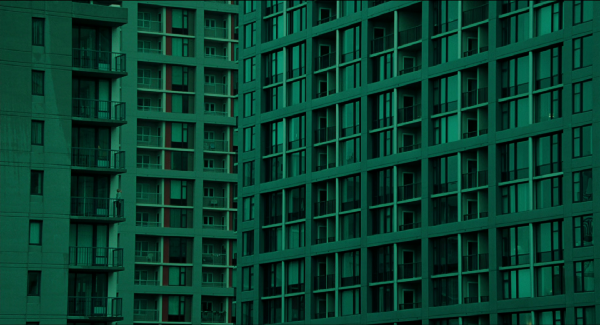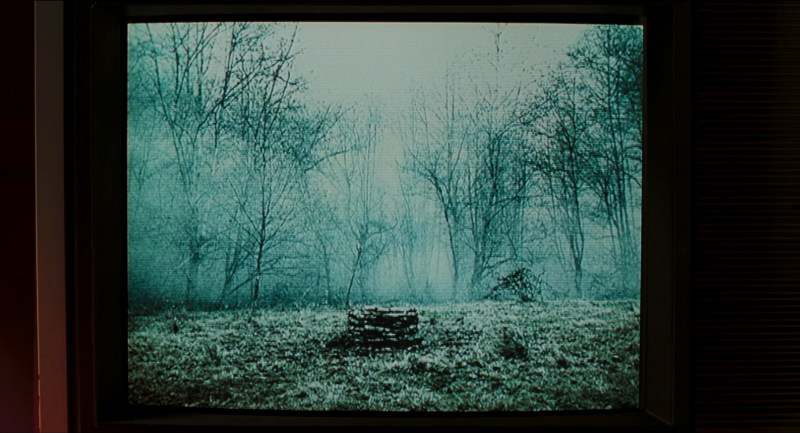
I’ve tried several ways of saying it and they all sounded mealy-mouthed, so I’ll just be blunt: Horror movies almost never scare me. Time and again I’m been promised something truly terrifying, from Hereditary to The Witch to The Babadook, and time and again I walk away feeling distinctly unmoved. Even if I like the movie, horror rarely manages to, y’know, horrify me. I want a movie to stick in the back of my brain and keep me up at night, to make me jump at shadows in my room, to (borrowing a line from one of the few films to have this effect on me) make me too scared to close my eyes and too scared to open them.
Gore Verbinski’s The Ring does this to me. Even on my most recent rewatch, it kept me up late at night, its images looping around and around in my brain. I want to break down why this film scares me so much, in a way few other films can come close to achieving.
The first button of mine that The Ring pushes is the strangely unnerving qualities of TV static. When I was a kid, that visual snow freaked me out, and as an adult I think I know why. Blaring and bright, yet shifty and formless; it’s unavoidable and abstract. It demands your attention and offers nothing in return. It is the absence of meaning, imagery void of psychology or intent. It’s hypnotic in its abstract banality. Every frame suggests a hidden depth, a signal in the noise, a truth you’ll never find. Imagine being screamed at by a creature whose language and tone bears no resemblance to anything you recognize as communication, and it doesn’t even seem to be alive. It’s a bottomless pit, waiting to swallow you up. In the visual language of The Ring, it’s a deep dark well.

So to me, TV static is a great component of a horror setpiece. Stick it in a dark room on a rainy night, as the film does in its opening scene, and I’ll be clutching the arms of my chair. Verbinski elaborates on this with a static-y visual motif. The constant Seattle rain floods the image with a similar visual noise, and the way Verbinski shoots the city’s buildings also suggest a busy and meaningless pattern. It’s like the whole film is watched through bad reception, a dark transmission from Somewhere Else.
The Ring takes this idea even further, and it’s able to do so because it understands fundamentally why the static is so unsettling. It’s something about the inability to find significance in those images, the lack of any connection to comprehensible emotion or thought. We see this as well in the content of the tape, which is for my money the scariest thing ever put to film.





Some of these images have obvious narrative significance. In fact, much of the film’s plot is given over to deciphering what they mean. Some of them have direct answers, and the main characters even see where they took place with their own eyes. Some of them, however, do not. What is so scary about the tape, I think, is how even the more literal images erupt fully formed from some ghostly unconscious. They are not filmed as much as they are vaguely remembered, the stitched-together mental compositions of an abused child trying to make sense of her circumstances. We feel the camera’s absence in these shots even before we know about the tape’s supernatural origins. These images were not created intentionally, they simply began to exist out of non-existence.
Samara’s inevitable murder of the viewer feels less to me like a deliberate action and more like an obligation. We hear her talk about wanting to hurt people and not knowing why. She is subject to the whims of some grand unknowable force, except such a thing can’t even be said to have identifiable whims. It just is, and Samara just is, and the tape just is. This is why I find the tape so haunting, why its imagery hounds me as I try to go to sleep. It is plainly horrific but terrifyingly meaningless. Even the shots which have literal origins don’t seem to be included with the intent of sending a message. It’s all just noise. It’s all just static.
The film’s most iconic scare is, of course, Samara crawling out of the TV at the end. I think even this is related to what we’ve been talking about. The scare is so compelling because the TV in question is an analog one. Modern technology has become so microscopic that we are completely alienated from the actual physical inner workings of it. Not so with a tube TV, or disposable cameras, or VHS tapes. Their inner workings are big enough to see with the human eye, to hear with our human ears. They click and whir and buzz without our direct input, and you can’t help but feel there’s something strangely alive about them.
Samara crawling out of the TV is so scary because something about it rings true. Doesn’t it feel like something is alive in there already? Something manifested in static, incomprehensible, something that can stop your heart just to perceive it, but you need to see, you need to look. This is a film about that self-destructive urge to bear witness to something you’re not supposed to see, about staring down into a fathomless well and waiting for it to reach out and pull you under. It doesn’t end with the finality of a fade to black, but with a cut to static. It leaves you on a screen of impenetrable terror. It’s the scariest film I have ever seen.

